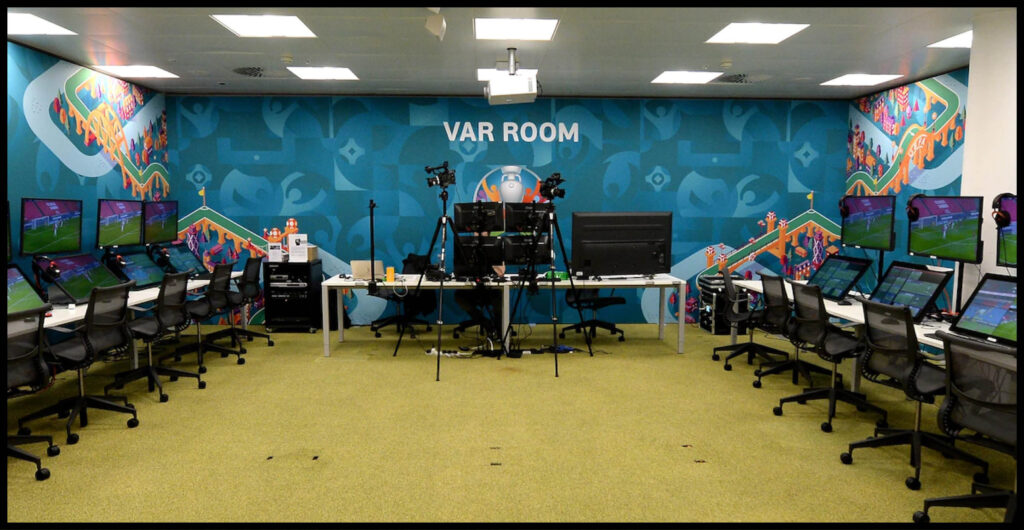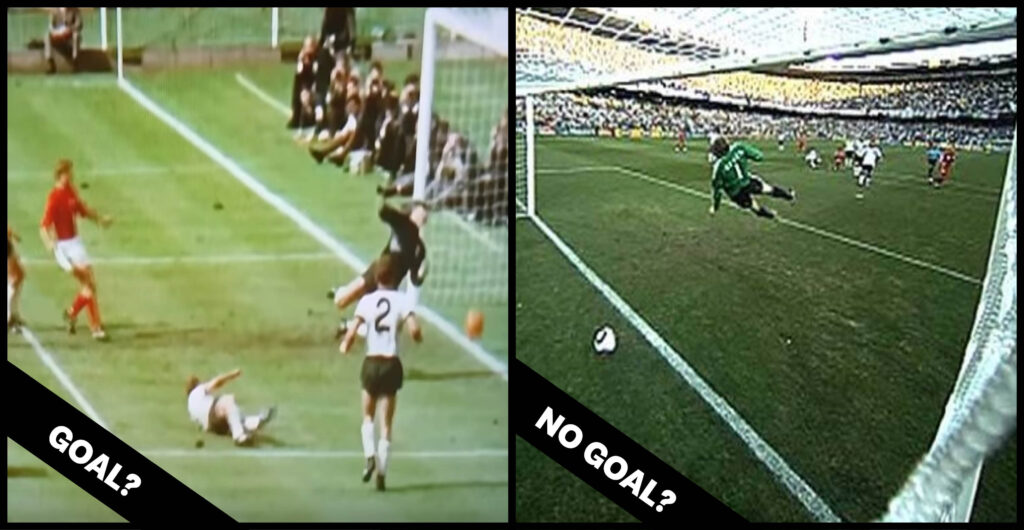With the delayed Euro 2020 men’s football tournament currently in full flow across Europe, as well as the Copa America simultaneously taking part in Brazil, Dawn Ellmore Employment takes a look at the technological advancements that have been made in the “beautiful game” in recent times.
Love it or hate it? The Video Assistant Referee
Where else could we start, but with VAR? It’s fair to say that the introduction of VAR has been one of the more controversial developments within the game in the modern era. Supporters of the system say that it improves the quality of refereeing decisions and avoids controversial mistakes, whilst the main complaint from detractors is that it removes the human element and spontaneity which makes football what it is.
The system, which has been gradually introduced by UEFA, the administrative body for football in Europe, sees a video assistant referee team review decisions made by the match referee in certain situations. The VAR team makes use of video footage to replay incidents from many different angles, and can communicate with the on-pitch referee via a headset in the case where they identify an error.
“UEFA believes very much in this project,” said Roberto Rosetti, chairman of UEFA’s Referees Committee, prior to the start of the Euro 2020 tournament. “The aim is to not only to help referees, but to help football. We are very satisfied with the results, and we are working hard to improve the system.”
Goal or no goal? Let Hawk-Eye decide
In a similar fashion to VAR, goal-line technology uses an automated process to assist the referee in making decisions that may not be easy to spot in real time – specifically, whether or not the ball has crossed the goal line. Compared to similar technology used in other sports, it is a relatively recent addition to football, having been approved for used by the International Football Association Board (IFAB) in 2012. To this day, the expense of implementing goal-line technology means is only used at the highest levels of the game.
Two incidents, both occurring in matches between England and Germany – in 1966 and 2010 – tend to dominate discussions around goal-line technology, and it seems that the introduction of such technology is more accepted amongst fans than the more recent implementation of VAR.
The most popular goal-line technology used in football is the system developed by Hawk-Eye Innovations Ltd, a UK-based company that is now owned by Sony. The system is based on computer vision and the principles of triangulation, using images and timing data provided by a number of high-speed video cameras located around the area of play. As well as being used in football, it is widely accepted as an improvement in a number of other ball sports – most notably cricket and tennis.
Other technologies assisting the modern game
Over the past few decades, in addition to the stand-out technologies discussed above, various other high-tech advances have been made to bring about improvements to our national sport.
Back in the 1980s, video playback started being used to analyse both individual and team performances. The enablement of advanced analysis allowed managers to become more tactically advanced, and players to get a new perspective on their strengths and weaknesses.
By the early 1990s, players were undergoing heart rate monitoring during matches, and to this day heart rate monitoring technology is used by clubs and national teams to scrutinise player’s workloads.
Sports science began to influence the approach to football management in the early 2000s, and strength and conditioning coaches are nowadays a vital part of any team’s backroom staff. Advances in food supplements were also made around this time, with nutritional products being used to aid footballers in dealing with the demands of, and recovery from, matches and training sessions.
The late 2000s saw the introduction of GPS tracking technology, which has further revolutionised post-match analysis. Individual player information such as total distance covered, quantity of accelerations and decelerations, and volume of high-speed running completed can be captured and used to assist in the mitigation of player injury and to offer an increased understanding of what players’ bodies go through during the course of a game.
The future of football technology
So, what might be next for football technology? Virtual and Augmented Reality systems seem likely to make their introduction in the not too distant future, offering players, coaches and supporters an increased level of understanding of the game.
With technology advancing at an astonishing rate, it seems inevitable that further gadgetry will be introduced – some of which we simply cannot predict at this time. As such, the next few years are sure to be an exciting time for everyone with an interest in football and technology.
About Dawn Ellmore Employment
Dawn Ellmore Employment was incorporated in 1995 and is a market leader in intellectual property and legal recruitment.



